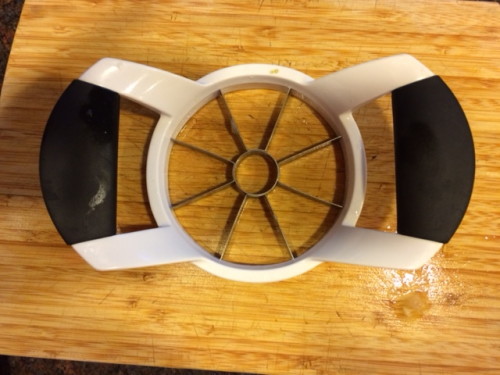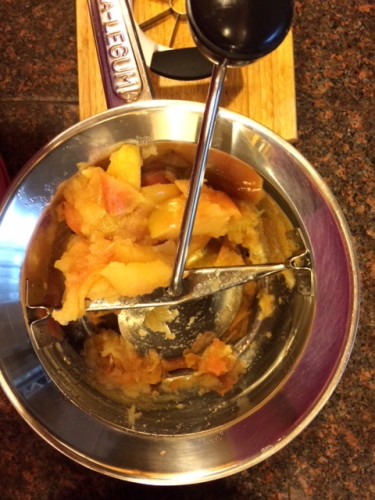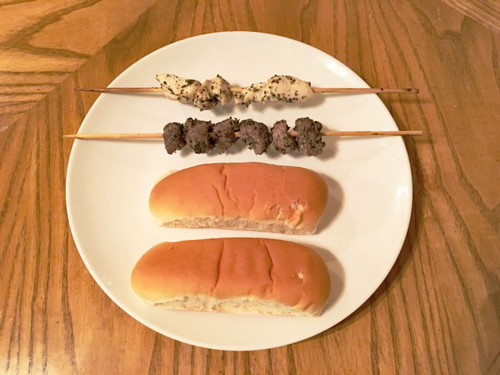It should not surprise my regular readers that I have strong opinions on anything. Applesauce is no exception. I’ve had relatives and friends who owned orchards in upstate New York. Two high school classmates now run the orchard in my hometown that had been in my mother’s family for many years.
Moving to the West Coast has brought challenges to my applesauce-making. My favorite applesauce apple, Rome Beauty, is rarely seen here at a reasonable price. Neither are other East Coast varieties such as Cortland, McIntosh, and Empire. I have made do with Jonagolds, Braeburns, or a mixture of whatever I have in the produce bin. The ubiquitous Red Delicious variety, even though it’s cheap and falls apart quickly upon cooking, has minimal flavor. It looks pretty in a fruit bowl, but that’s about it.
Below you’ll find my “recipe” (actually a gemisch) for applesauce. A few rules of thumb:
- Buy cheap apples for applesauce. You don’t need $3 a pound apples for this purpose. You can often get a 3-pound bag of apples at the grocery store for much cheaper than buying them loose.
- You don’t need pretty apples, either. They can be “scratch and dent” models. You’re only going to cook them down. No one will know that they weren’t perfect enough for export to Japan.
- Don’t peel the apples. The peels add color to the final applesauce, especially deep red varieties like Rome Beauty. My grandmother would not agree with leaving the peels on, but my mother does.
For a decent amount of applesauce (2 to 21/2 quarts), buy about 8-10 good-sized apples and wash them. I cut them up using this handy device, which gives you 8 pieces and gets rid of the core at the same time.
Put the apple pieces into a large, wide-bottomed pot. Add a little water or (even better) apple cider or juice. Throw in a cinnamon stick and a handful of crystallized ginger. Cover the pot and bring it to a boil. Turn down the heat and let it simmer for about 20-30 minutes until the apple pieces fall apart. From time to time, stir up the apples so the pieces on top cook as well. If there’s a good bit of liquid left at this point, uncover the pot and let the liquid evaporate off. Remove the cinnamon stick and take the pot off the heat.
Once the apple pieces are cooked, get out that food mill that you bought for $1 at a yard sale and use the coarsest grater plate (the one with the largest holes). Place the food mill over a large bowl. Add the apple pieces, a little at a time, and grind away. Some of the peel will get ground into the sauce. It’s fiber, and a good thing. Keep grinding until everything has gone through the mill.
You’ll notice that I did not add any sugar to the apples before cooking other than what’s on the crystallized ginger. It’s not necessary. If the final product isn’t sweet enough for your taste, you have my permission to stir in a little honey or (better yet) real maple syrup.





Recent Comments